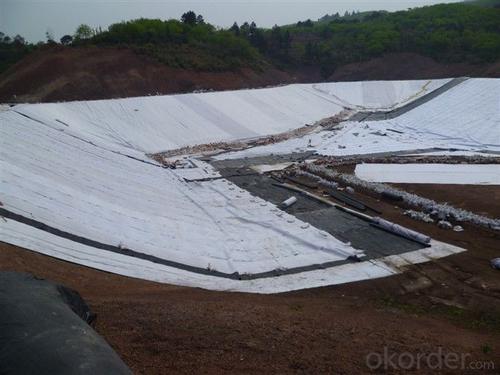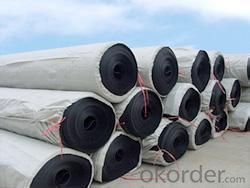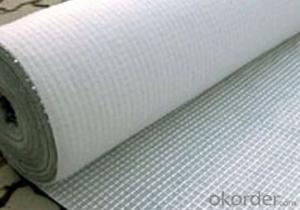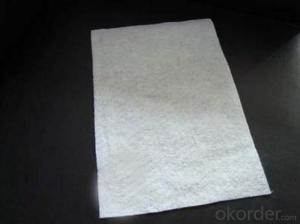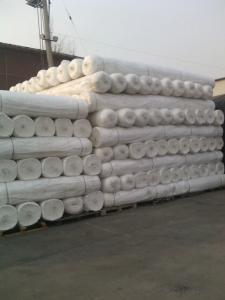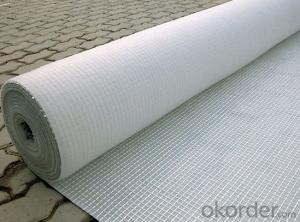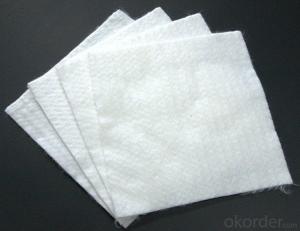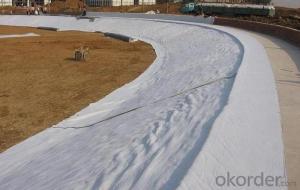Tissu Geotextile in Various Specifications
- Loading Port:
- China Main Port
- Payment Terms:
- TT or LC
- Min Order Qty:
- -
- Supply Capability:
- -
OKorder Service Pledge
OKorder Financial Service
You Might Also Like
1. Product Description:
The Nonwoven geotextile is a kind of vertical and horizontal weaving plastic woven cloth,
Nonwoven geotextile can not only prevent plant roots under the ground, beautify the
environment, improve labor efficiency and economic benefit, prevention and
control of environmental pollution, reduce pesticide use, also can prevent insects
and small animals and grow.
2. Product Characteristic:
1.Prevent leakage disposal in landfill or waste water or waste dregs disposing field.
2.The plane direction laying of dam ,the vertical direction laying for ground still used in the construction fence and waste material field.
3.Specification :
1.length :50-100m
2.width:1-8m
3. Type: Geotextiles
4. Geotextile Type: Woven Geotextiles
5. Color: white or as you request
4. Reference Picture:

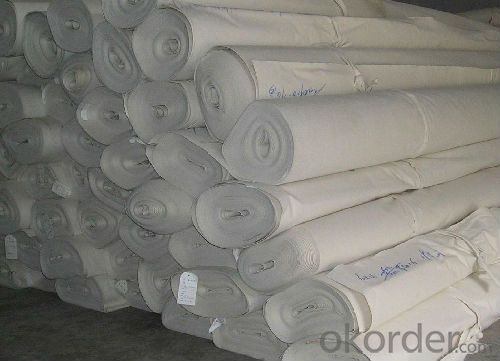
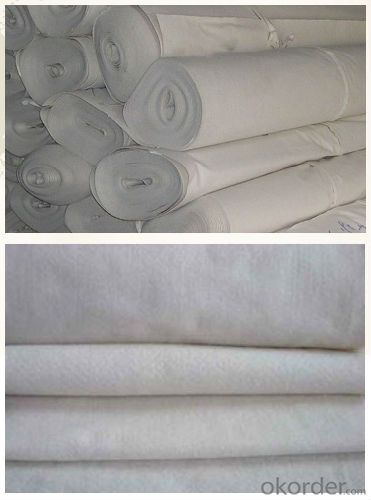
- Q: Stone cage slope is the first gravel or the first shop geotextile
- I am geotextile cloth
- Q: What are the specifications for geotextiles used in erosion control tubes?
- The specifications for geotextiles used in erosion control tubes typically include criteria such as high tensile strength, UV resistance, durability, and permeability to allow for proper water drainage while preventing soil erosion. These geotextiles are usually made from synthetic materials like polypropylene or polyester to ensure long-term stability and effectiveness in erosion control applications.
- Q: Hope expert expert to give the answer
- The ditch is the ditch at the edge of the roadbed, mainly used to collect and exclude a small amount of surface water within the roadbed and flow to the roadbed; drainage ditch is the ditch, cut ditch, roadbed near the water discharged to the bridge or road Where the ditch in the natural river ditch. Geotextile is a kind of synthetic high strength fiber material which is used to improve the bearing capacity of subgrade when the bearing capacity of the foundation is poor. It has many kinds of fiber materials. The purpose is to improve the bearing capacity and prevent the cracks in the road surface.
- Q: How do geotextiles contribute to the stability of railroad ballast?
- Geotextiles contribute to the stability of railroad ballast by acting as a barrier between the ballast and the underlying soil. They prevent the migration of fine particles from the soil into the ballast, reducing the risk of ballast contamination and subsequent track settlement. Geotextiles also provide reinforcement to the ballast, distributing loads more evenly and enhancing its overall stability.
- Q: Now geotextile price quota how?
- 2017 geotextile price cheaper than last year, the current price of raw materials is relatively stable production. Geotextile classification of many, you ask more general, so no way to give you a detailed offer. Different technical requirements are uneven prices, but the overall price has come down, and is now the lowest price since 2017.
- Q: Related applications, product applications, industrial structure and distribution
- Road cloth, that is, geotextile, also known as geotextile, it is made of synthetic fibers through the needle or woven from the permeability of geosynthetics. Geotextile is a new material geosynthetics which one, the finished product for the cloth, the general width of 4-6 meters, the length of 50-100 meters. Geotextile is divided into a woven geotextile and non-woven geotextile. Geotextile with excellent filtration, drainage, isolation, reinforcement, protection, with a light weight, high tensile strength, good permeability, high temperature, anti-freeze, anti-aging, corrosion resistance characteristics. The application of geosynthetics originated in the 1950s, the domestic geotextile is one of the national eight five plan, China promulgated in 1998, "geosynthetics staple acupuncture non-woven geotextile" (GB / T -1998) standard, the current geotextile has been widely used in many areas. Geotextile mainly in the following three series: 1, acupuncture non-woven geotextile, specifications 100g / m2-600g / m2 between any choice, the main raw material is the use of polyester staple fiber or polypropylene staple fiber, made by acupuncture, Uses are: river, sea, lake embankment slope protection, reclamation, wharf, ship lock flood control and other projects, is through the filter to play a soil and water conservation and effective way to prevent piping. 2, acupuncture non-woven and PE film composite geotextile, specifications have a cloth a film, two cloth a film, the largest width of 4.2 meters The main raw material is to use polyester staple fiber non-woven, PE film through the composite , The main purpose is anti-seepage, apply to railways, highways, tunnels, subways, airports and other projects. 3, non-woven and woven composite geotextile, a variety of non-woven and polypropylene filament woven composite, non-woven and plastic woven composite, suitable for foundation reinforcement, adjust the permeability coefficient of the basic engineering facilities.
- Q: How do geotextiles help in preventing lateral spreading of soil?
- Geotextiles help prevent lateral spreading of soil by acting as a barrier or stabilizer. They are placed within the soil, creating a stable layer that restricts the movement of particles and soil mass. This prevents the soil from shifting laterally and helps maintain its stability, especially in areas prone to erosion or landslides.
- Q: What is the number of tensile units for geotextiles
- Geotextile stretch unit number: width of 1 m geotextile in a certain force under the rupture of the strong value. KN / m
- Q: What are the key factors affecting the UV stability of geotextiles?
- The key factors affecting the UV stability of geotextiles include the polymer type, additives, and the thickness of the geotextile. The polymer type determines the inherent resistance of the geotextile to UV degradation. Additives such as UV stabilizers can enhance the UV resistance of the geotextile. Additionally, the thickness of the geotextile plays a role in its UV stability, as thicker geotextiles tend to provide better protection against UV rays.
- Q: Do geotextiles have any environmental benefits?
- Yes, geotextiles have several environmental benefits. They help in erosion control by stabilizing soil and preventing sediment runoff into water bodies. They also aid in vegetation growth by retaining moisture and promoting root development. Geotextiles can reduce the need for chemical herbicides and fertilizers by acting as a physical barrier against weed growth. Additionally, they can enhance the efficiency of drainage systems, reducing the risk of waterlogging and promoting groundwater recharge. Overall, geotextiles contribute to sustainable land management practices and help protect the environment.
Send your message to us
Tissu Geotextile in Various Specifications
- Loading Port:
- China Main Port
- Payment Terms:
- TT or LC
- Min Order Qty:
- -
- Supply Capability:
- -
OKorder Service Pledge
OKorder Financial Service
Similar products
Hot products
Hot Searches
Related keywords



